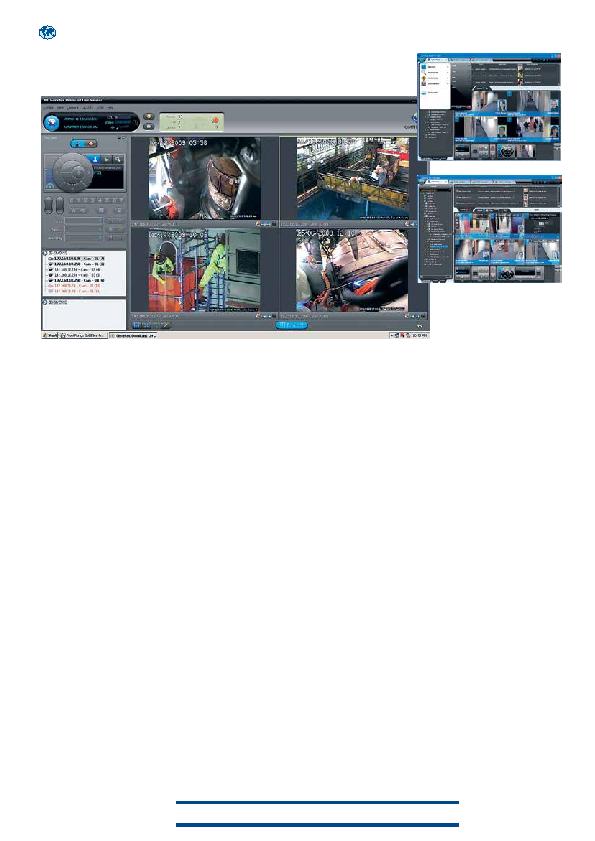
3 0 · d e t e k t o r i n t e r n a t i o n a l
Security News Every Day
www. securityworldhotel.com
the VMS market
simpler solutions, and VMS sup-
pliers' product development, such
as video analytics, will be crucial.
The VMS market will of course
continue to benefit from the
change from analogue to digital
technology, but the current market
growth of around 2030 percent
will rather be 510 percent at
the end of the decade. Memoori
identifies the biggest threat to the
VMS suppliers' growth as being
camera manufacturers using edge
storage, but it will take a long time
for them to drive VMS providers
out of this sector.
Memoori values the global
market to around $700 million
with EMEA taking roughly
$175 million of this. There
are 60 established manufacturers
of video management software,
and the top ten of these account
for 60 percent of the market.
This share has grown substantially
in recent years, mainly thanks to
Milestone and Genetec. n
For more information about
Memoori's recent annual report on
the security business and ordering
details: www.armedia.se, info@
armedia.se, +46 (0) 8 556 306 80.
quickly than the market on
average, Cropley noted.
The report entitled "The
World Market for CCTV and
Video Surveillance Equipment
2013 edition" is available from
IHS. Readers should note that
the market share estimates are
based on supplier revenues from
the sales of VMS software and
licenses during the 2012 calendar
year; shares are not calculated
from software shipments or instal-
lations.
The VMS space will remain
highly competitive within the
next five years, with innova-
tive solutions and keen prices
expected to be critical variables.
The healthy projected growth,
however, could mean rich rewards
for the most successful suppliers,
predicts IHS.
However, according to the
Memoori report "The physical
security business 2013 to 2017"
the VMS market appears to be
entering the maturity stage. And
yet it still has high growth as
it takes a slice of the DVR and
NVR market it will see competi-
tion from "Cloud" and "Edge" in
the long term. The rate of growth
will slow down as IP cameras seek
Cropley, principal analyst for
video surveillance at IHS and
author of the report from which
these findings were taken.
Milestone Systems, which had
held the pinnacle position since
the VMS category was added to
the IHS video surveillance reports
in 2004, retained the largest
market share in EMEA, but rival
Genetec was the top performer in
the Americas.
Even so, the overall VMS
market remains fragmented with
no single supplier possessing
share greater than 10 percent.
Moreover, some of the smaller
suppliers particularly those in
Asia are growing much more
The global VMS market for
CCTV and video surveillance was
valued at $700 million in 2013,
with forecasts projecting revenue
to hit north of $1.6 billion by
2017. All three geographic regions
representing the Americas, Asia
and the collective Europe-Middle
East-Africa (EMEA) territory will
exhibit strong double-digit expan-
sion during the next five years.
Asia, driven largely by China, will
be the fastest-growing area for
VMS.
"While ranking of the top 4
suppliers remained unchanged,
2012 marked the first time that
the No. 1 spot was held concur-
rently by two entities," said Jon
www.kentima.com
Genetec and Milestone Systems at the top
of a fragmented $700 million VMS market
danish Milestone Systems and Genetec from Canada
are the top two players on the VMS market (Video
Management Software). In fact, during 2012 they
were evenly matched as the top suppliers in a market
worth more than half a billion dollars, according to
the market research company IHS.
detektor has interviewed the CeO and founder of
Genetec, Pierre Racz and the newly appointed Thomas
Lausten, Vice President, sales EMEA of Milestone Sys-
tems (page 32 to 35) in order to get their view on the
market. But first a short introduction about the VMS
market, as it looks today.
The global VMS market for CCTV and
video surveillance was valued at $700
million in 2013, with forecasts project-
ing revenue to hit north of $1.6 billion
by 2017.
